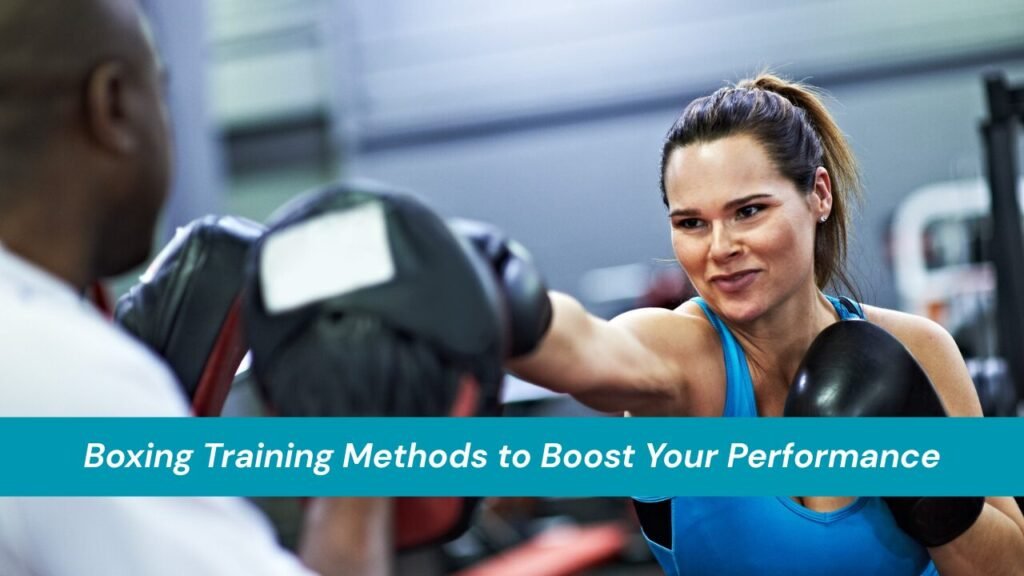Boxing is not just about throwing punches it’s about building strength, speed, agility, and mental toughness. Whether you’re a beginner or an experienced fighter, understanding the different boxing training methods is crucial for success in the ring. This comprehensive guide explores the essential training methods used by boxers worldwide to get in top shape, sharpen their skills, and prepare for intense matches. With insights from professional trainers, experienced fighters, and scientific principles, this guide will provide everything you need to elevate your boxing performance.
Understanding Boxing Training Methods
Boxing training involves a mix of techniques designed to improve both the body and mind. These methods focus on boosting physical attributes like strength and endurance, as well as refining technical skills such as punching, footwork, and defense.
Why is Boxing Training Important?
Boxing is one of the most physically demanding sports. It requires peak physical condition to withstand the demands of a fight. Effective boxing training methods help boxers:
- Increase strength for powerful punches
- Improve cardiovascular endurance for sustained effort
- Boost speed and agility for quick reflexes
- Develop mental toughness to withstand pressure in the ring
Key Components of Boxing Training
To excel in boxing, a well-rounded training program is crucial. Here are the key components that make up an effective boxing training regimen.
1. Strength Training
Strength is a fundamental part of boxing. Strong muscles allow for powerful punches and efficient movement. Boxers focus on building strength through various resistance training exercises that target the entire body.
Recommended Exercises
- Squats for leg strength and power
- Deadlifts for overall strength and stability
- Bench Press for upper body power
- Core exercises like planks and leg raises to improve balance and punch strength
2. Cardio Training
Boxers need to maintain high levels of cardiovascular fitness for stamina. Cardio training improves the body’s ability to sustain effort during intense rounds.
Effective Cardio Methods
- Jump Rope: A classic boxing exercise for improving footwork, coordination, and cardiovascular endurance.
- Running: Long-distance runs build stamina, while interval sprints help improve speed and explosive power.
- Shadow Boxing: A great way to keep the heart rate elevated while practicing footwork and combinations.
3. Speed and Agility
Quick reflexes are crucial in boxing. Speed training helps boxers react faster and land punches more efficiently.
Drills for Speed and Agility
- Ladder Drills: Improve footwork and quick direction changes.
- Cone Drills: Enhance movement and agility by training boxers to weave in and out of cones while maintaining speed.
- Mitt Work: Working with a coach or partner on focus mitts increases punching speed and accuracy.
4. Mental Conditioning
Boxing is not just a physical sport it’s mental too. Training the mind helps boxers stay focused, calm under pressure, and resilient in tough situations.
Techniques for Mental Conditioning
- Visualization: Mentally rehearsing fights to build confidence and prepare for different scenarios.
- Meditation: Helps to reduce stress and maintain mental clarity.
- Positive Self-Talk: Encourages motivation and confidence, even during difficult training sessions.
Boxing Workouts for Beginners to Advanced
Boxing workouts vary depending on the athlete’s skill level. Here’s an overview of training methods for different levels.
Beginner Boxing Workouts
For beginners, the goal is to build basic fitness and learn proper form.
Sample Beginner Workout (3-4 Days a Week)
- Warm-up: 5-10 minutes of jump rope or light jogging
- Shadow Boxing: 3 rounds of 3 minutes each with 1-minute rest in between
- Basic Footwork Drills: Focus on moving in all directions while maintaining balance
- Core Exercises: Planks, leg raises, and Russian twists
- Cool-down: Stretching and deep breathing exercises
Intermediate Training Techniques
As boxers become more experienced, they can handle more intensity and complexity in their training.
Sample Intermediate Workout (4-5 Days a Week)
- Warm-up: 10 minutes of jump rope, including speed variations
- Heavy Bag Training: 6 rounds of 3 minutes each focusing on combinations
- Sparring: Light sparring sessions to practice defensive and offensive techniques
- Strength Training: Incorporate exercises like squats and push-ups to build muscle
- Cardio Sprints: High-intensity interval sprints for 20 minutes
Advanced Training Routines
Professional boxers push their limits with advanced training techniques that combine strength, speed, and mental conditioning.
Sample Advanced Workout (5-6 Days a Week)
- Warm-up: 10-15 minutes of jump rope and dynamic stretches
- Heavy Bag Work: 8 rounds with a focus on power and speed
- Advanced Mitt Work: Work with a coach for sharp, fast combinations and defensive movements
- Explosive Strength Training: Olympic lifts (e.g., clean and press) to develop power
- Conditioning: Long-distance runs mixed with sprints, or HIIT training
- Mental Conditioning: Visualization, mindfulness, and relaxation techniques
How Boxers Train for a Fight
Training for a fight is different from regular workouts. Boxers must peak in physical and mental condition for their upcoming bout.
Physical Preparation
Leading up to a fight, boxers gradually reduce the intensity of their workouts to ensure they’re well-rested and at their best. This period, called “tapering,” focuses on maintaining conditioning while allowing for recovery.
Sparring
Sparring is an essential part of fight preparation. Boxers simulate real fight conditions by sparring with a partner, working on their technique, timing, and defensive skills.
Mental Preparation
Mental preparation is key. Boxers need to stay focused and maintain self-belief. Mental strategies like visualization, meditation, and tactical planning are employed to help boxers stay calm and focused during a fight.
FAQs
1. What are the best exercises to build punching power in boxing?
Exercises like the medicine ball slam, deadlifts, and push-ups can help improve punching power by building explosive strength in the upper body and core.
2. How often should I train as a beginner boxer?
Beginners should train 3-4 times a week, focusing on developing fitness, learning technique, and practicing basic skills.
3. How long does it take to get in shape for boxing?
It typically takes 3-6 months of consistent training to see significant improvements in strength, conditioning, and boxing technique.
4. Do boxers need to focus more on strength or speed?
Both strength and speed are equally important in boxing. Strength provides power in punches, while speed helps with reaction time and delivering quick combinations.
5. How can I improve my footwork for boxing?
Footwork can be improved by practicing ladder drills, shadow boxing with a footwork focus, and using cone drills to enhance agility.
Conclusion
Incorporating a variety of boxing training methods is essential for becoming a skilled and conditioned fighter. Whether you’re just starting or preparing for a big match, a well-rounded training approach will ensure you have the physical and mental strength to perform at your best. If you’re serious about boxing, start building your fitness base today and seek expert guidance to elevate your skills!. Visit boxing essential to explore more.



